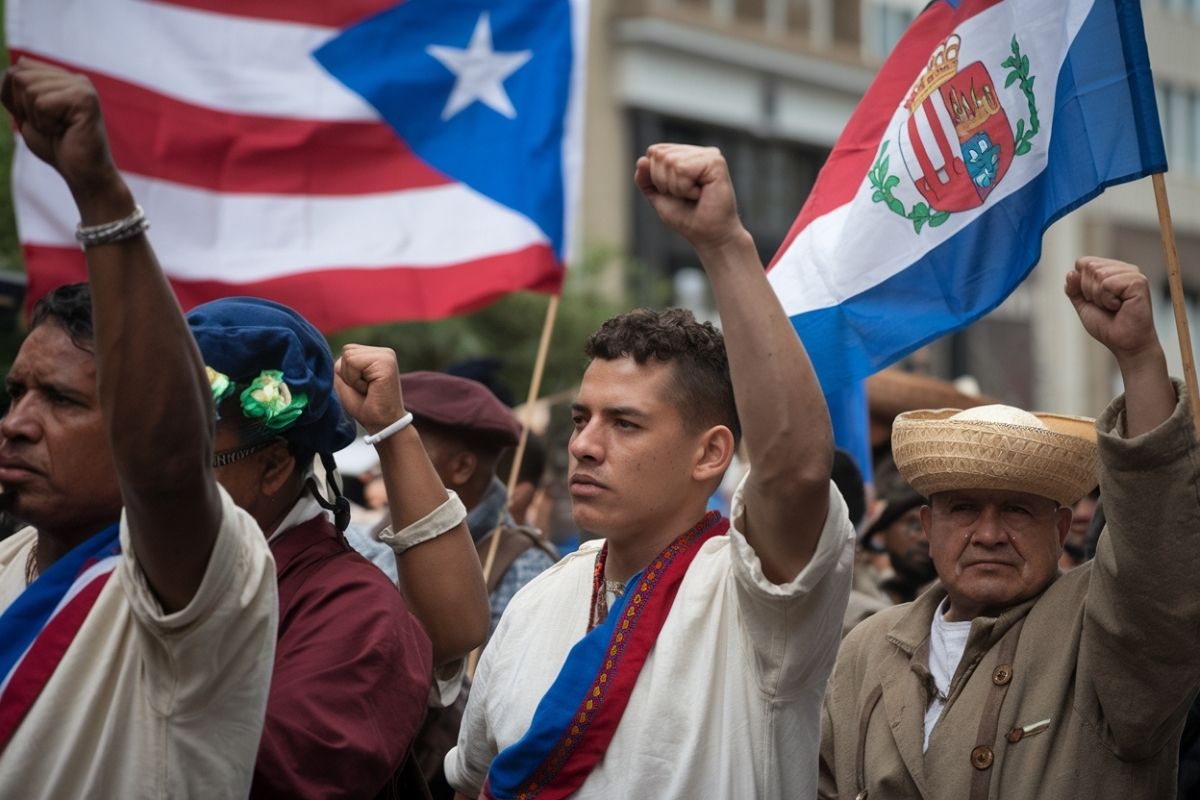
Did you know the Puerto Rican Nationalist Party revolts of the 1950s were pivotal in Puerto Rico's history? These uprisings were driven by a desire for independence from the United States. The revolts included significant events like the Jayuya Uprising and the attack on the U.S. Congress. The Nationalist Party, led by Pedro Albizu Campos, played a central role in these movements. Their actions aimed to draw attention to Puerto Rico's colonial status and push for self-determination. Despite being suppressed, these revolts left a lasting impact on Puerto Rican identity and politics. Dive into 30 intriguing facts about these historic revolts and discover their enduring legacy.
Key Takeaways:
- The Puerto Rican Nationalist Party fought for independence from the U.S. in the 1950s, leading revolts in Jayuya, Utuado, and San Juan. Their legacy continues to inspire movements for independence in Puerto Rico and beyond.
- The nationalist revolts of the 1950s left a lasting impact on Puerto Rico's history, sparking international attention and inspiring future generations of activists. The events are commemorated annually and studied in schools.
The Puerto Rican Nationalist Party
The Puerto Rican Nationalist Party played a significant role in the island's history during the 1950s. Their revolts were driven by a desire for independence from the United States. Here are some key facts about these events.
- The Puerto Rican Nationalist Party was founded in 1922 by José Coll y Cuchí.
- Pedro Albizu Campos became the party's president in 1930, leading it with a more militant approach.
- The party's primary goal was to achieve Puerto Rican independence from U.S. rule.
The Jayuya Uprising
The Jayuya Uprising was one of the most notable revolts led by the Nationalist Party. It took place in the small mountain town of Jayuya.
- The Jayuya Uprising occurred on October 30, 1950.
- Blanca Canales, a prominent nationalist leader, led the revolt.
- The rebels declared the Republic of Puerto Rico, raising the Puerto Rican flag.
- U.S. military forces quickly suppressed the uprising, using planes and artillery.
- The town of Jayuya was placed under martial law for several days.
The Utuado Uprising
Another significant revolt was the Utuado Uprising, which happened simultaneously with the Jayuya Uprising.
- The Utuado Uprising also took place on October 30, 1950.
- Nationalists attacked the local police station, resulting in a fierce battle.
- The U.S. National Guard intervened, leading to the deaths of several nationalists.
- The town of Utuado experienced heavy damage due to the conflict.
The San Juan Revolt
The capital city of San Juan was not spared from the nationalist revolts. The events there were equally dramatic and impactful.
- The San Juan Revolt occurred on October 30, 1950.
- Nationalists attempted to assassinate Governor Luis Muñoz Marín.
- The attack on La Fortaleza, the governor's mansion, was unsuccessful.
- Several nationalists were killed or captured during the assault.
The Attack on Blair House
The nationalist movement extended beyond Puerto Rico, reaching the U.S. mainland with a bold attack on Blair House in Washington, D.C.
- The attack on Blair House took place on November 1, 1950.
- Oscar Collazo and Griselio Torresola, two nationalists, attempted to assassinate President Harry S. Truman.
- Torresola was killed during the attack, while Collazo was captured and sentenced to death, later commuted to life imprisonment.
- The attack highlighted the lengths to which nationalists would go to achieve their goals.
The Aftermath of the Revolts
The revolts had significant consequences for the Puerto Rican Nationalist Party and the island's political landscape.
- The revolts led to increased repression of nationalist activities by the U.S. government.
- Many nationalist leaders, including Pedro Albizu Campos, were imprisoned.
- The revolts brought international attention to Puerto Rico's independence movement.
- The events of the 1950s influenced future generations of Puerto Rican activists.
The Legacy of the Nationalist Revolts
The legacy of the nationalist revolts continues to be felt in Puerto Rico and beyond. These events are remembered for their impact on the island's history and the ongoing struggle for independence.
- The revolts are commemorated annually on October 30, known as "El Grito de Jayuya."
- The nationalist movement inspired other independence movements in Latin America.
- The revolts are a symbol of Puerto Rican resistance and resilience.
- The events of the 1950s are studied in Puerto Rican schools as part of the island's history curriculum.
- The nationalist revolts have been the subject of numerous books, documentaries, and films.
- The legacy of the Puerto Rican Nationalist Party continues to influence contemporary political movements on the island.
Reflecting on the Puerto Rican Nationalist Party Revolts
The Puerto Rican Nationalist Party revolts of the 1950s were pivotal moments in Puerto Rico's history. These uprisings highlighted the island's struggle for independence and the desire of many Puerto Ricans to break free from U.S. control. The revolts, though ultimately unsuccessful, brought international attention to Puerto Rico's political situation and sparked discussions about its future. They also left a lasting impact on the island's culture and identity, inspiring future generations to continue advocating for their rights. Understanding these events helps us appreciate the complexities of Puerto Rico's relationship with the United States and the enduring spirit of its people. The revolts serve as a reminder of the importance of fighting for self-determination and the power of collective action in shaping a nation's destiny.
Frequently Asked Questions
Was this page helpful?
Our commitment to delivering trustworthy and engaging content is at the heart of what we do. Each fact on our site is contributed by real users like you, bringing a wealth of diverse insights and information. To ensure the highest standards of accuracy and reliability, our dedicated editors meticulously review each submission. This process guarantees that the facts we share are not only fascinating but also credible. Trust in our commitment to quality and authenticity as you explore and learn with us.
